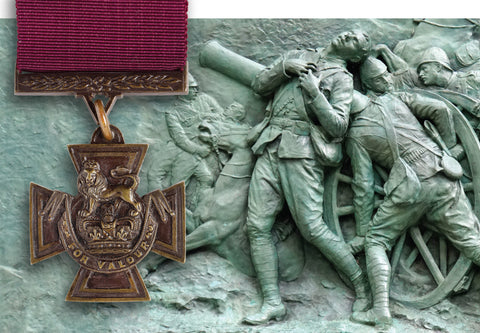
How Did These Three Canadians Earn the Victoria Cross in South Africa?
Boers, who today number some 1.5 million souls, are the descendants of predominantly Dutch-speaking settlers who arrived in southern Africa beginning in the 17th century. In the wake of the Napoléonic wars Britain exerted increasing control over the region, sparking conflict with the remaining Boer republics. The Second Boer War broke out in October 1899 when Boer irregulars and militia launched raids into the British Cape Colony and Natal. British troops and contingents from Canada, Australia and New Zealand counterattacked north along existing railways, capturing Bloemfontein (capital of the Boer Orange Free State), Johannesburg and Pretoria (capital of the Boer Transvaal) by June 1900. They then wheeled east across Transvaal and by fall had advanced more than 100 miles to Belfast.
On Nov. 6, 1900, Maj. Gen. Horace Smith-Dorien, commander of the 19th Brigade, 9th Division, led elements of the Royal Canadian Dragoons and Canadian Mounted Rifles, D Battery of the Canadian Field Artillery and various British infantry units on a sweep for a Boer laager (base camp) along the north bank of the Komati River some 20 miles south of Belfast.
While the force was bivouacked near Leliefontein farm that night, Smith-Dorien determined that stiff Boer resistance rendered further action futile and decided to withdraw at dawn on the 7th. He directed Canadian Lt. Col. François-Louis Lessard to form a rear guard comprising nearly 100 dragoons, a horse-drawn Colt-Browning M1895 machine gun and two 12-pounder guns from D Battery. They alone stood between the Boers and Smith-Dorien’s main force, the latter’s baggage train lumbering along. Lessard estimated it would take at least four hours for the slow-moving procession to clear the first ridge before the rear guard could fall back. When Boer commanders realized the enemy force was withdrawing, they dispatched two maneuver units, the Ermelo and Carolina commandos, to harass and isolate the rear guard.
Threatened with encirclement and peppered by Boer sniper fire from both flanks and their front, the men of the rear guard fought on throughout the day, all the while falling back. The two 12-pounders “leapfrogged” each other, one gun providing covering fire while gunners limbered up the other and withdrew. The dragoons and their machine gun moved under the 12-pounders’ covering fire.
In command of the machine gun, Sgt. Edward J.G. Holland engaged every threat till the overheated gun jammed. Desperate to keep the weapon out of Boer hands, and with the horse too exhausted to pull its carriage, Holland pulled the M1895 from its mount and rode off with it tucked beneath an arm.
Though twice wounded, Lt. Richard E.W. Turner remained in the fight, directing his men to hold off repeated Boer attacks aimed at capturing both the machine gun and the 12-pounders. They engaged the enemy at point-blank range before finally falling back.
Lieutenant Hampden Z.C. Cockburn was not as fortunate. He and his troops on the left flank absorbed withering Boer fire that by day’s end had killed or wounded most every man in his command. Yet the wounded officer rallied his troops, repeatedly repulsing the Boers until his men were overrun and captured.
The collective actions of Cockburn (a 32-year-old barrister from Toronto), Turner (a 29-year-old grocer and lumberman from Quebec) and Holland (a 22-year-old graduate of Ottawa Collegiate Institute) had safeguarded the guns that in turn spared Smith-Dorien’s main column from capture or destruction. All three were awarded the Victoria Cross, Britain’s highest award for combat valor, and each survived the Battle of Leliefontein. Cockburn was freed in a prisoner exchange and returned to his legal practice, Holland fought in—and survived—World War I as a major in the Canadian Machine Gun Corps, and Turner participated in the same conflict, rising to the rank of lieutenant general.
